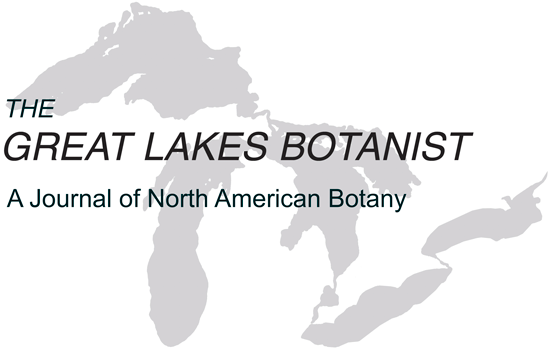ï~~2006
THE MICHIGAN BOTANIST
201
RANGE EXPANSION BY CUT-LEAVED TEASEL (DIPSACUS
LACINIATUS) IN WISCONSIN AND MINNESOTA, WITH A
CONSIDERATION OF GERMINATION SUCCESS
Katherine M. Stolp and Philip A. Cochran
Division of Natural Sciences
Saint Norbert College
De Pere, WI, 54115
(Present address of PAC: Biology Department,
Saint Mary's University of Minnesota, 700 Terrace Heights, Winona, MN 55987)
ABSTRACT
Cut-leaved teasel, Dipsacus laciniatus, an exotic herbaceous plant, has been reported primarily
in the southern half of Wisconsin, and its distribution in Minnesota has not been well defined. We
documented the occurrence of D. laciniatus in Langlade County, Wisconsin, and both D. laciniatus
and D. fullonum in Winona County, Minnesota. Viability of seeds harvested from the site in Langlade
County was assessed by planting them in a greenhouse. Overall germination success was comparable to previously published values and indicated that the growing season in northern Wisconsin is
sufficient for teasel to produce viable seeds. Seeds chilled for two months prior to planting did not
differ significantly in germination success from seeds that were planted immediately (without chilling), although they germinated more quickly. Seeds that had undergone a cold treatment produced
seedlings that exceeded the height of the rosettes produced by seeds without a cold treatment. The
results of our germination trials may reflect an adaptive flexibility that helps D. laciniatus invade
new habitat. The results also emphasize the need to eliminate the few teasel plants that are present in
Langlade County before the population expands from its current limited distribution.
Keywords: Dipsacus, germination, Minnesota, teasel, Wisconsin
INTRODUCTION
Cut-leaved teasel, Dipsacus laciniatus, is an invasive plant established
throughout much of the northeastern and midwestern United States (Solecki
1993, and references therein). Prior to this study, it was known from several
counties in southern and central Wisconsin (Salamun & Cochrane 1974, N. A.
Harriman in Love 1978, Wisconsin State Herbarium 2000), with additional unpublished records for Waupaca and Green Lake counties documented by specimens in the University of Wisconsin-Oshkosh herbarium (Harriman, personal
communication). In Minnesota, Ownbey & Morley (1991) listed D. laciniatus as
"introduced" but did not provide a distribution map, apparently because they did
not consider the species to be naturalized. Solecki (1993) plotted the edge of the
range as just reaching the southeastern tip of the state, and only two specimens
(from St. Louis County) were listed in the holdings of the University of Minnesota Plant Herbarium (J. F. Bell Museum). A related species, D. fullonum (=
D. sylvestris of some workers), has not been reported from Minnesota but is
widespread in much of the U.S. (Solecki 1993). The purpose of this paper is to
report new localities for D. laciniatus in Wisconsin and for both Dipsacus
0


